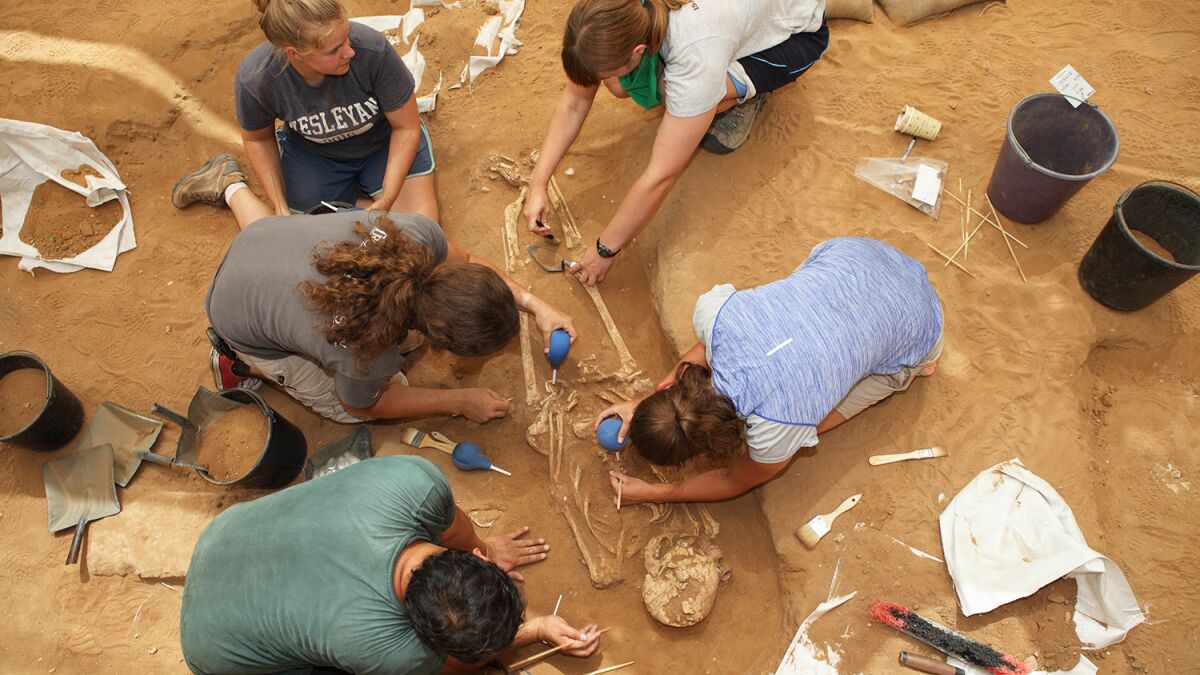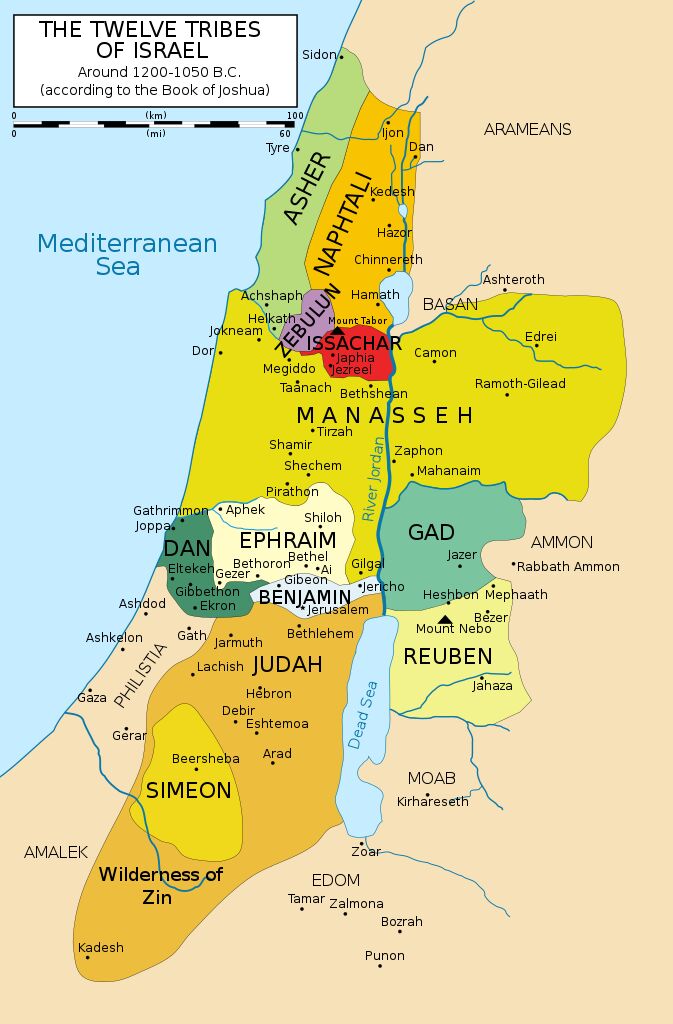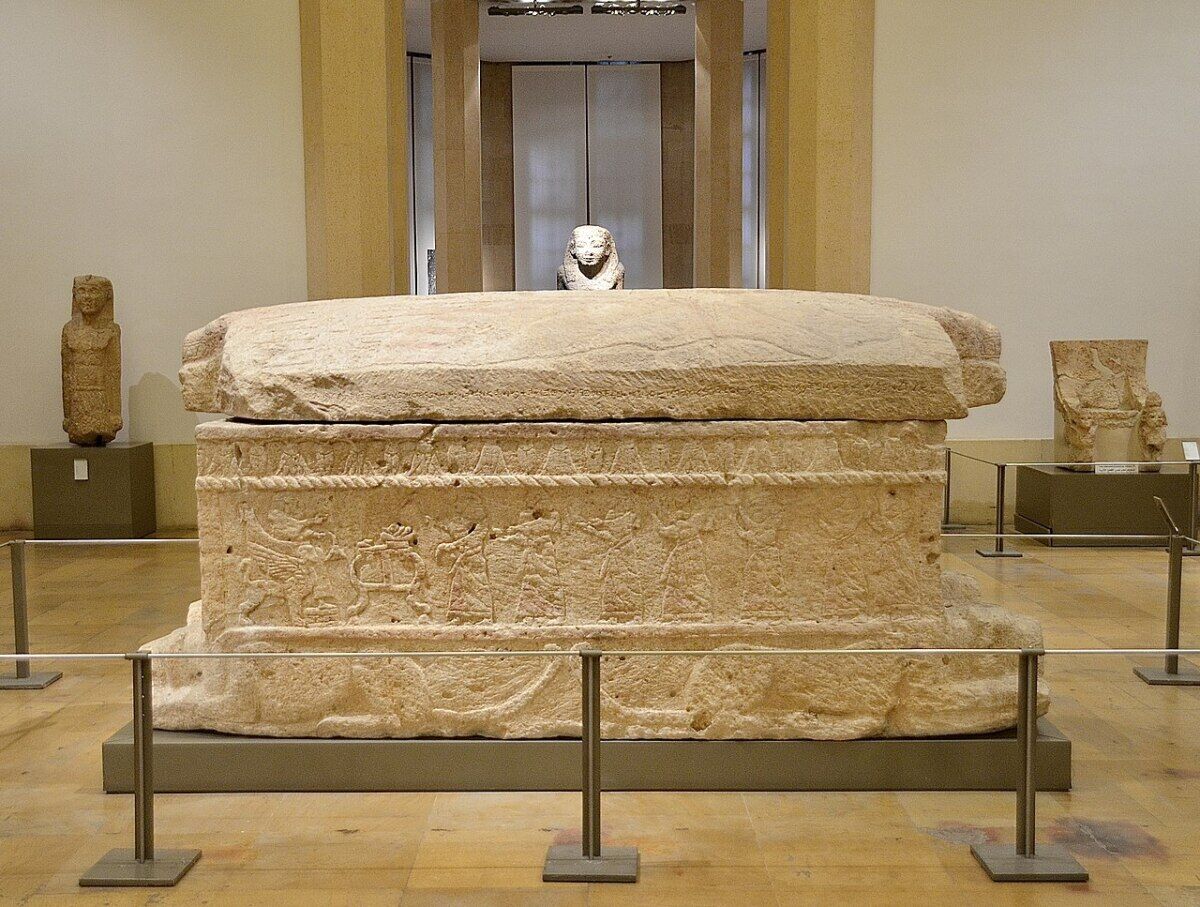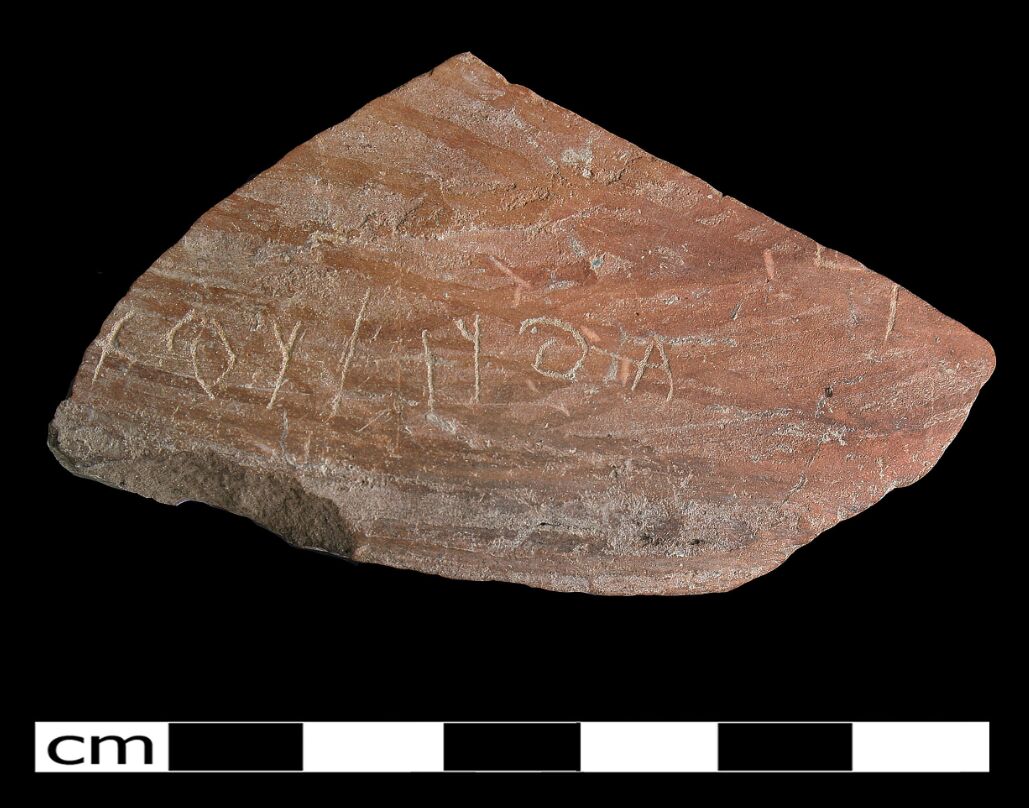Minimalism’s Answer to Bible Historicity: Bible Accuracy Only ‘Coincidental’?
Over the last century and a half of archaeological excavation, a snowballing of findings have served to corroborate the biblical account. As is often cited on this website, nearly 60 different personalities mentioned in the Hebrew Bible have been independently proved with certainty through archaeology, including a total of 14 kings of Israel and Judah. Biblical archaeology has confirmed the locations of dozens of important cities, as well as the events that happened within them. It has verified everything from biblical civilizations and major conflicts to minor (and even peripheral) skirmishes, cultural customs, dietary details, personal names, clothing items, architectural elements and even common sayings. It has affirmed events from biblically attested earthquakes to famines to fire and brimstone.

In the words of the late renowned archaeologist Prof. Nelson Glueck (1900–1971), “It may be stated categorically that no archaeological discovery has ever controverted a biblical reference. Scores of archaeological findings have been made which confirm in clear outline or exact detail historical statements in the Bible. And by the same token, proper evaluation of biblical descriptions has often led to amazing discoveries” (emphasis added). In the words of the late, great archaeologist Prof. William F. Albright (1891–1971): “There can be no doubt that archaeology has confirmed the substantial historicity of Old Testament tradition.”

Bible minimalists who, over the centuries, have been quick to rubbish the Bible’s accounting of details such as the existence of the Hittite Empire, a King Belshazzar of Babylon, a King David of Israel, and a King Sargon of Assyria have since had to revise or rescind their theories. One famous minimalist scholar even admitted—albeit tentatively—that “now we are in a new phase of attempts to show that archaeology can strike back at the critical approach [to the Bible].”
Still, one recourse for minimalist, Bible-is-elaborate-fiction proponents is to claim that biblical accuracy is simply coincidental—that the “Bible” didn’t really “know” certain details or events which it recorded, but they coincidentally happened to be accurate.
As confusing as this line of reasoning sounds, the internal ramifications for it are more befuddling. Here are a couple of examples.
From Whence Came the Philistines?
Last year, the W. F. Albright Institute of Archaeological Research (named after the above-mentioned archaeologist) presented a series of interviews hosted by the institute’s current director, Dr. Matthew Adams, titled “Conversations in the Archaeology and History of Ancient Israel With Israel Finkelstein.” Professor Finkelstein is a famously outspoken Bible minimalist and low-chronologist popularly cited in media reporting. In the eighth episode of the 26-episode series, the topic of conversation centered on the biblical historicity of the early Philistines—namely, as relating to the Late Bronze Age and first part of the Iron Age.
https://www.youtube.com/watch?v=rNkTeJwkiDM&list=PLvm7MPUI_WJclpUfZgCw1Tfd_cyT4Fh-f
Dr. Adams questioned Professor Finkelstein about the Late Bronze Age/Early Iron Age emergence of the Philistines in the Levant as it pertains to the Bible’s account (13th to 10th centuries b.c.e.): “Does the Bible know anything about [this early Philistine history]?” Finkelstein replied, “I don’t think so.” He went on:
I think that the evidence, as it stands today, regarding dissemination of writing and scribal activity shows us that the biblical material on the Philistines could not have been composed before the eighth century b.c., the earliest. Some of the materials, or many of the materials, come from the seventh century b.c. So we are centuries away, four or five centuries away, from the early phase of the settlement of the Philistines on the coast of Canaan. … The Bible, I think, does not remember, really, the first phase of Philistine history.
Adams followed up with the question, “When does the Bible start to remember things?” Finkelstein’s response: “[T]he earliest memory of the Philistines in the Bible, I think, can be placed against the background of the middle of the ninth century, or the ninth century, let’s put it this way. However, composition of texts describing Philistines comes a bit later.”
It’s important to note that these comments come against the backdrop of new genetic research in 2019 of a Philistine burial site in Ashkelon, showing—rather remarkably—a strong genetic link to Crete as the point of origin for the Philistine migration, roughly beginning around the 13th century b.c.e. Over the decades, scholars have posited numerous theories for the origin of the Philistines—that it was perhaps Cyprus, Anatolia or other Mediterranean island/coastal territories. The Bible, on the other hand, repeatedly asserts that Crete was the origin island for the Philistines at this time (anciently named Caphtor—see Jeremiah 47:4; Amos 9:7; Genesis 10:14; Deuteronomy 2:23; 1 Chronicles 1:12).

Finkelstein begs to differ. He proceeded to describe how the biblical description of the “pentapolis,” the five Philistine cities (also shown to have existed via archaeology), was based on the Greek phenomenon of shared city-power during the first part of the first millennium b.c.e. He explained the arrival of Greek mercenaries to Egypt in the late seventh century b.c.e. (Egypt’s 26th Dynasty), Egypt’s control over the land of Philistia at that time of Assyria’s withdrawal, and that these Greeks may have also ended up in Judah. “So these Greeks could have brought with them the typical idea and the phenomenon that is well known from the coast of Asia Minor, western Asia Minor, the Ionian coast, of Greek ‘leagues of cities.’ This was a very well-known phenomenon in the seventh and sixth centuries b.c. So the Deuteronomistic authors [theorized biblical authors sometimes dated to the Persian period] could have taken this idea [for a Philistine pentapolis] from the Greek tradition that came with the mercenaries in the seventh century b.c.”

Adams followed: “I see. So are you suggesting that the biblical understanding of the Philistines is really a picture of the land of Philistia while the Egyptians were dominant in the area, who had Greek mercenaries with them?”
Finkelstein: “Yes, I think that the answer is positive. And this also can explain the fact that the Bible ‘knows,’ so to speak, that they originated, these Philistines, from the west. So the Bible makes the link of Philistia, Philistines, Mediterranean background with the phenomenon of the time of the authors of Greek mercenaries serving in [Egyptian-controlled] Philistia in the seventh century b.c.”
Adams: “So it’s coincidence that they’re roughly correct. They didn’t really know where they came from.” “The Bible is always correct,” Finkelstein replied sarcastically.
Thus, the Bible’s (now proven accurate) insistence that the Late Bronze Age/Early Iron Age Philistines derived from Crete—despite erroneous scholarly views over the decades to the contrary (bringing to mind another separate scientific proposition, that most published research is wrong)—is dismissed by the same scholars as mere coincidence.
https://www.youtube.com/watch?v=42QuXLucH3Q
We’ll revisit the implications of Finkelstein’s theory in a moment. But first, another example, pertaining to King Hiram of Tyre.
Hiram—I or II?
“Early research regarded the histories of David and Solomon as related in the books of Samuel and Kings as legitimate sources for the study of the 10th century b.c.,” wrote Prof. Nadav Na’aman in his 2019 Journal of Near Eastern Studies article “Hiram of Tyre in the Book of Kings and in the Tyrian Records.” “It is widely accepted today … that the cycles of stories about the reigns of David and Solomon were composed long after the time of the two kings by authors who had had no contemporaneous written sources for composing the episodes they described.”
Na’aman made the case that the period of writing of the biblical accounts relating to David and Solomon (10th century b.c.e. kings) must have been reflective of a centuries-later time period of Tyrian King Hiram ii. “I suggest that the ‘Acts of Solomon’ [a now lost source cited in 1 Kings 11:41 and 2 Chronicles 9:29], the main pre-exilic source available to the Deuteronomist [the even later, Persian-period author], was written at the time of the Sargonids, possibly in the late years of Sargon ii or early years of Sennacherib [the late eighth century b.c.e.]. [T]he shape of Solomon’s kingdom as the golden age in Israel’s history and his figure as an imperial ruler was borrowed from that of the Assyrian Empire, probably at the time of Sargon ii.” Na-aman continued:
[T]he figure of Solomon and his kingdom are alien to the reality of the northern kingdom, and his outstanding achievements far exceed those of all north Israelite kings. Solomon’s outstanding figure was modeled after that of the ruler of an empire [i.e. Sargon or Sennacherib], and his age is presented as a Golden Age, an unattained peak in the history of the monarchical period.

Na’aman proceeded to bring up the famous biblical account of David and Solomon’s friend, the Phoenician King Hiram of Tyre, who aided in the building of the temple—as well as the existence of a King Hiram ii during the later eighth century. “Hiram of Tyre plays an important role in the history of Solomon and is the only person mentioned in the king’s history whose name is known from extra-biblical sources [that of Josephus, Menander and Dius]. The references to his name in the ‘Acts of Solomon’—a work possibly written in the late eighth century b.c.—raises several questions. For example, from which source did its author extract Hiram’s name? On what basis did he present him as a major player in the history of Solomon? What did the author know about the historical figure of the mentioned Tyrian king?”
He quoted Professor Finkelstein and Neil Asher Silberman, who drew the conclusion that “it is probable that the eighth-century Hiram [ii] traded with the northern kingdom [of Israel], and that his name and deeds were used in order to praise Solomon as a great monarch—in yet another legendary assimilation of the fabled prosperity of the north. The mention of ships of Solomon and Hiram sailing together to Tarshish (1 Kings 10:22)—probably Tarsus in southeastern Turkey—may reflect the trade cooperation of the northern kingdom with Tyre and the Phoenicians in the eighth century.”
“Thus,” stated Na’aman, “they suggested that the figure of the Hiram referred to in the biblical history of Solomon was shaped after the figure of Hiram ii, ruler of Tyre in the time of Tiglath-pileser iii [likewise dating to the late eighth century b.c.e.].”
Therefore, Na’aman—as well as Finkelstein and Silberman—concluded that just as Solomon is modeled after either King Sargon or King Sennacherib, the biblical Hiram is modeled on the eighth-century King Hiram ii. (The comparison to Sargon is ironic, given that up until 19th-century discoveries, the only knowledge of Sargon came from the Bible—Isaiah 20:1—and as such was singled out as either a confused or a fabricated biblical reference.)
But there’s one major difficulty.
The second-century b.c.e. Tyrian king list of Menander was drawn from then extant Phoenician king lists, and it is a document for which various Phoenician kings have been cross-corroborated archaeologically. This document does mention a King Hiram ii who ruled during the eighth century b.c.e. But it also lists a King Hiram i who ruled during the 10th century b.c.e., at the time of Solomon—and Menander even expounds on Solomon and Hiram’s interactions. So a Hiram was on the scene at the time of Solomon’s rule. Coincidence?

Citing Menander, Na’aman admitted: “[C]learly, Hiram i indeed ruled the kingdom of Tyre around the mid-10th century b.c. The exact date of his accession to the throne of Tyre depends on the traditional date of the foundation of Carthage, and is not my concern here. Seemingly, Hiram’s throne tenure fits the biblical chronology of King Solomon.” He continued:
This chronological discussion raises the question: Where did the author of the “Acts of Solomon” learn that Hiram ruled in Tyre at the time of his protagonist?
I suggest that the biblical history of the monarchical period can serve as a general model for the composition of the early Tyrian work. Just as the author of the “Acts of Solomon” lived long after the events he described, so too did the Phoenician historian who wrote the history of Hiram live long after the time of his protagonist. And just as the era of Solomon is presented in biblical history as the Golden Age in the history of Israel, so also was the age of Hiram probably portrayed as the Golden Age in Tyrian history.
Did you catch that? In essence, the biblical account of David and Solomon is imaginary (obviously)—yet because Phoenician records appear to corroborate the biblical account, the Phoenician records must be imaginary too!
“I assume that the list of operations that the anonymous Phoenician historian attributed to Hiram is as trustworthy as those that the author of the ‘Acts of Solomon’ attributed to the Jerusalemite king. The two works were composed at a late time, hundreds of years after the events they related, and by authors who portrayed the reigns of the two kings as the Golden Ages of their respective kingdoms,” Na’aman concluded.
In light of the prominence of Hiram i in the early history of Tyre, I suggest that oral stories of his Golden Age and his outstanding accomplishments reached the court of Jerusalem. The author of the “Acts of Solomon” was aware of these stories and selected Hiram to play the partner of Solomon in his major building projects … these details were born in the creative mind of the author. In this creative manner, he tied together the histories of the two kings, each of them memorialized in his respective kingdom as representative of the Golden Age of its history.
Therefore, in essence, Solomon is Sargon, Hiram i is Hiram ii, and whatever the case, the Bible—and necessarily, Phoenician records too—is in error.
The Necessarily Odd Conclusions of Revisionist Minimalism
But the above is the least of the necessary biblical character-reassignments made to fit with minimalist theory. Back to the discussion between Adams and Finkelstein. Because if the Bible “knows nothing” about the Philistines from their arrival to beyond the time of David, what does that mean for the significant biblical accounts relating to the Philistines—not least, that of David and Goliath?
Dr. Adams followed up: “So the story of David and Goliath is obviously meant to tell us some other story. What is the meaning there to the authors?” Finkelstein: “Good question. I am a great believer in meaning in every sentence. The authors of these stories, the Deuteronomistic authors, were so clever and sophisticated and preplanned to advance their ideology and theology that nothing is just being told in coincidence [an ironic comment].” He explained:
I think that there is a meaning here. And the meaning is the following, in my opinion; of course, here we are going into speculation, definitely. But my speculation is the following, that we are now in a situation of two revival ideologies about to collide. Judah, with the dreams of reestablishing the great United Monarchy, the legendary United Monarchy in the time of King Josiah [late seventh century b.c.e.], who is described as the new David in the biblical text. And Egypt coming, the time of Psammetichus and Necho, and especially Necho, and here is Egypt coming to revive the Egyptian empire in the Levant. And the two are about to collide. And the people of Judah know it.
So I must ask the following question: Does the author try to tell the people of Judah that, listen, here is a situation. Goliath is the symbol, as a Greek soldier, of the main elite forces, the main skeleton of the Egyptian forces in the Levant. And David, coming there and killing Goliath—not equal to him, without any armor, this the weak David against the strong Goliath—is a fable for what’s going to happen, that Judah will be able to prevail.
Therefore, in this newly convoluted, reworked story, Josiah is actually David, and Goliath is Egypt. (It’s worth mentioning that in the same interview, Finkelstein dismissed the original Davidic, 10th-century b.c.e. Judah—similarly to Na’aman with Solomon—as “a small, godforsaken place.” If so, then why Judah’s “dreams of reestablishing the great United Monarchy,” if it never existed to begin with?)
Adams asked: “[So] a majority of the Philistine stories that we all know and love, David and Goliath, for example, really fit into this context of Judah being threatened by Egypt [in the seventh century b.c.e.]. However, [a] conflict between Judah and Egypt doesn’t really address the Philistine issue very directly. How do we connect all of this back to Philistines? Why is Goliath Philistine? Why isn’t he just ‘Greek mercenary guy’ [or one might add, an Egyptian]?” Good question! This was the rather tenuous, convoluted response from Finkelstein:
I suppose that the answer is the following, that we need to look at the Judahite authors in this sense that they understand the Philistine cities as cooperating with the Egyptians, with the 26th Dynasty. Remember, please, that the Egyptian forces were stationed in the southern coastal plain in Philistia, in the land of the Philistines. And they also are aware of the fact that Greek mercenaries are serving as elite troops, and they are in the Egyptian military. And they symbolize, if you wish, the power of Egypt at that time, because these are the most dangerous soldiers in the Egyptian army.
But this is not enough. I think that the Judahite authors are also aware of the link being made between the Greek mercenaries and the Greek origin of the Philistines.
But earlier in the conversation, the biblical accuracy of Philistine origins was chalked up to coincidence. So the rationale for explaining a late seventh-century Greek-Egyptian mercenary Goliath-symbol as Philistine is that the Judahite authors knew the Philistines came from the Greek isles anyway? And so the convoluted explanation comes full circle.
Therefore, one of the most long-lived and loved stories in history, that of David and Goliath, is reduced to a fake story about a fake King David fighting a fake Philistine, merely a fake mercenary symbol of Greek or Egyptian strength, with the aim of returning Israel to a fake period of glory. All against the backdrop of the Bible knowing virtually nothing about the Philistines before the ninth century b.c.e. and a therefore coincidental biblical accuracy of Philistine origins—yet crafted by authors who, as Finkelstein stated, left nothing to coincidence.
What?
Does This Make Sense?
How labyrinthine! It’s one thing to dismiss the Bible as fictional. It’s certainly another to try to logically explain the rational implications for such dismissal. As the saying goes, when a butterfly flaps its wings on one side of the world, it causes a hurricane on the other. What are the knock-on effects for such radical reimagining in order to cast the biblical account aside as inaccurate, the product of rampant imagination?
I’m reminded of the famous words of 14th-century logician William of Ockham: “The simplest solution is almost always the best.”
Recently, we posted an article about the musings of Sir Winston Churchill on the subject of biblical minimalism in an essay he wrote on the legacy and historicity of Moses. “We reject, however, with scorn all those learned and labored myths that Moses was but a legendary figure upon whom the priesthood and the people hung their essential social, moral and religious ordinances,” Churchill declared.
We remain unmoved by the tomes of Professor Gradgrind and Dr. Dryasdust. We may be sure that all these things happened just as they are set out according to the Holy Writ. We may believe that they happened to people not so very different from ourselves, and that the impressions those people received were faithfully recorded and have been transmitted across the centuries with far more accuracy than many of the telegraphed accounts we read of the goings-on of today. …
Let the men of science and of learning expand their knowledge and probe with their researches every detail of the records which have been preserved to us from these dim ages. All they will do is to fortify the grand simplicity and essential accuracy of the recorded truths which have lighted so far the pilgrimage of man.
This faith in the scientific method, however, may be misplaced in a sense. As the Bible aptly puts it, such are “[e]ver learning, and never able to come to the knowledge of the truth.” (And again the question is asked, Is most published research wrong?)

But as Churchill stated, in large part, such “grand simplicity and essential accuracy” of the Bible is what archaeology—not theoretical Bible minimalism—has shown. Take the Philistines. There’s the descriptively accurate biblical account of the earliest Philistines (or “pre-Philistines,” if you like), before the major 13th-to-11th-century b.c.e. Mediterranean migration. There is, of course, the accurate geographic pinpointing of the migrating Philistines’ nation of origin—and not only that, the time frame within which they came to the Levant, gradually arriving on the scene, and becoming more and more of a problem for Judges-period Israel. There’s the biblically accurate accounting of various early details about the Philistines—including their unique, early twin-pillared temples (mentioned in the account of Samson), and even similar, parallel names to that of Goliath. (And as for “giants”? There’s some fascinating corroboration for that too.) And all of this well before the ninth century b.c.e. Not to mention the emerging evidence of a rich, powerful, well-positioned Solomonic kingdom during the 10th century b.c.e. (and yes, even in trade, particularly in silver, with Tarshish).
Does the Bible truly know nothing about such history? Can this all be chalked up to coincidental accuracy?
The biblical account, particularly relating to David and Solomon (and earlier), is often dismissed as falsity (when it isn’t “coincidentally” accurate). We’ll therefore conclude here with the words attributed to Solomon himself, and his search for truth and accuracy (Ecclesiastes 12:11-12, 10; International Standard Version):
Sayings from the wise are like cattle prods and well fastened nails; this masterful collection was given by one shepherd. So learn from them, my son. There is no end to the crafting of many books ….
The Teacher searched to find appropriate expressions, and what is written here is right and truthful.